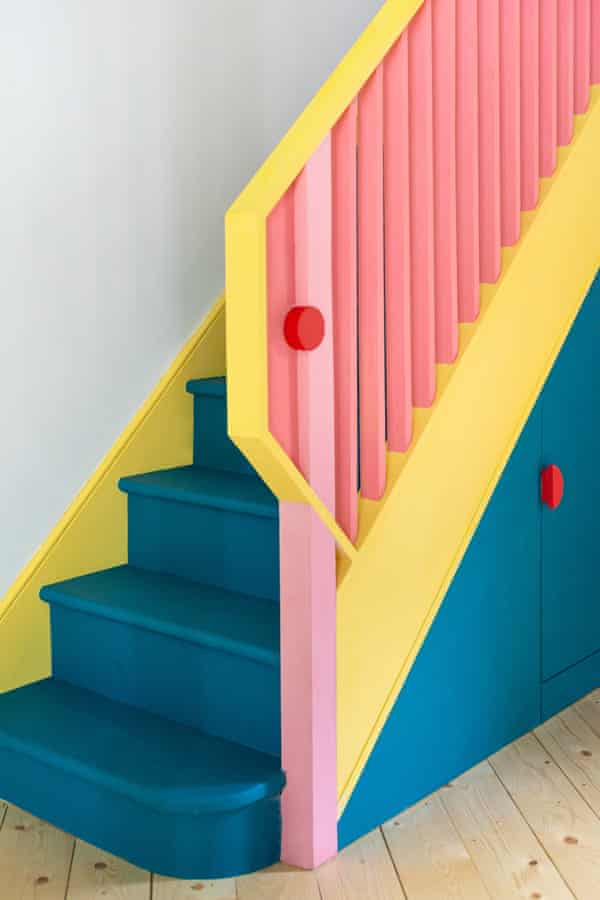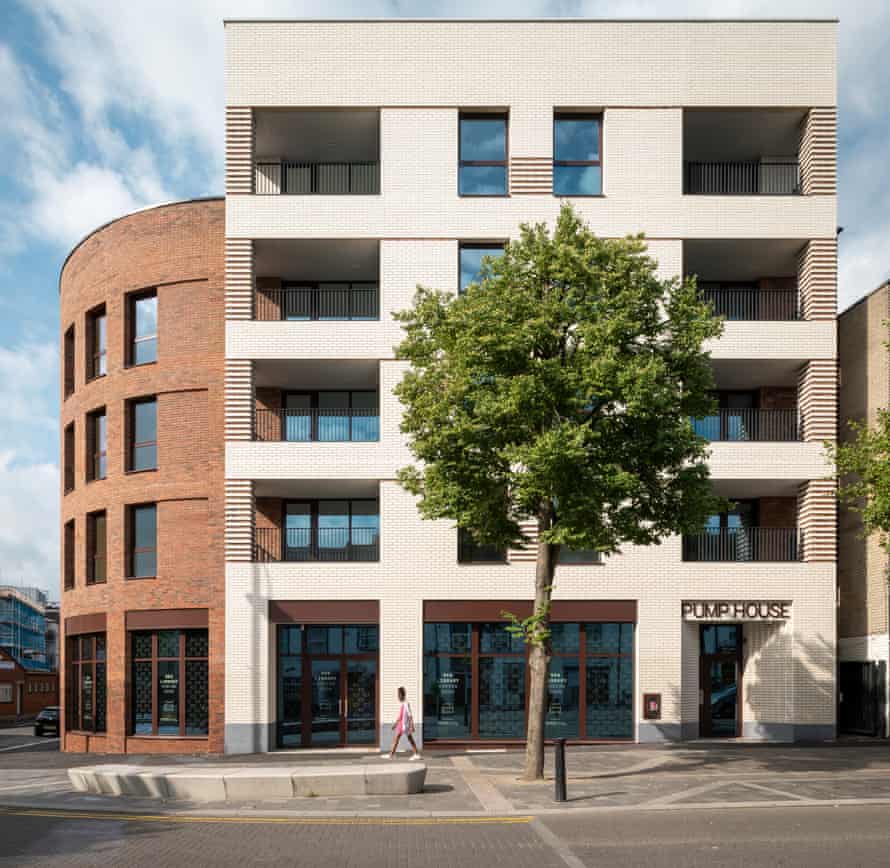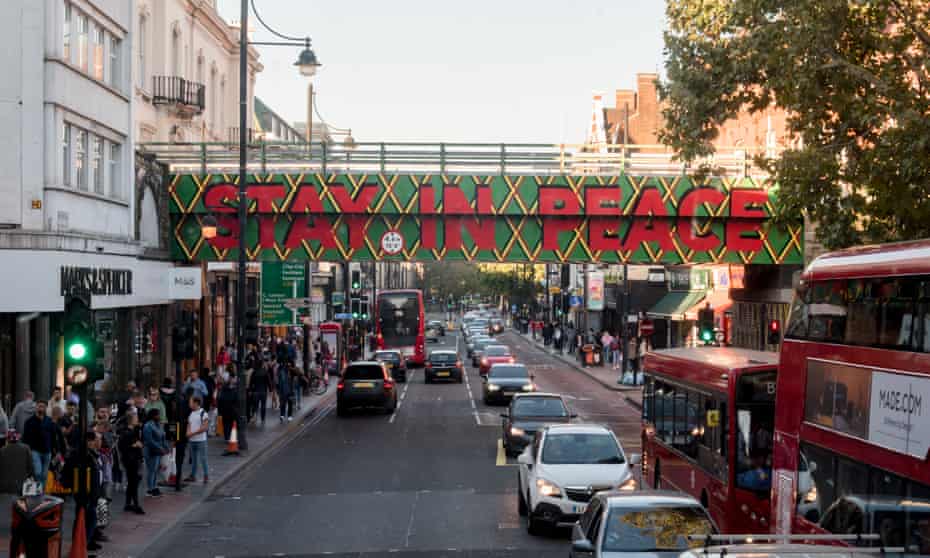“I am a poster child,” says David Ogunmuyiwa, “for what you get if you invest in people’s education, healthcare and homes.” The son of immigrants, he grew up on the Aylesbury estate in south London, the often-vilified place that Tony Blair visited on the morning after his first election as prime minister, as the exemplar of the kind of blighted Britain that he was going to fix. But Ogunmuyiwa, inspired by seeing Richard Rogers’s Lloyd’s building across the river from his school, knew that he wanted to be an architect. Which, as the founder of the practice Architecture Doing Place, he now is.
“There are hundreds of me,” he continues, so he questions why he sees so few people like himself in his profession. He criticises the London borough of Hackney, which has a well-respected programme of building housing, but which in one of the most diverse areas of the country “has not employed anyone who looks like Stephen Lawrence” to design them (the particular significance of the murdered black teenager is that he was planning to become an architect at the time of his death in 1993).

Ogunmuyiwa took a detour before he became an architect, working first as a local authority housing officer. He believes he is the only housing officer turned architect in the country. This gives him a unique insight into what is, alongside diversity, one of the issues most motivating architects at present. Housing and race are two different matters, but they also interconnect. They raise in different ways the same question: what exactly can design contribute to larger issues of social justice?
Architecture Doing Place is one of 109 of the best emerging British practices in New Architects 4, the latest edition of a “guide for the open-minded client” that the Architecture Foundation periodically produces. The first came out in 1998, and included several architects that have gone on to be leaders of their profession, including the Stirling prize winners Caruso St John and AHMM, and muf. In some ways the current group is like the first: you see the same striving of talent to get itself seen, through extracting the most out of house extensions and office interiors. Some have proved themselves abroad with projects of a scale that are harder to find here, for example WallaceLiu’s impressive conversion of a former steelworks into the Chongqing Industrial Museum.
There is wit, as in Unknown Works’s creation of a British fish and chip shop in Chengdu, China. You find, in Apparata’s House for Artists in Barking, playful shapes of triangles and circles rendered in substantial and sober masonry. You get snapshots of architects’ current explorations in style, such as the precision postmodernism – wherein kitsch colours are arrayed with infinite care – of Office S&M. Some practices, such as Space Popular, achieve architecture that is close in concept and experience to installation art.

But the latest New Architects is also different. It is more diverse than its predecessors and displays a changed set of attitudes. The first book came out in the early Blair years, in the shadow of 18 years of Conservative rule, a time when most architects were keen above all to prove themselves as service providers, as trustworthy cogs in the wheels of business. Their self-descriptions tended to stress how well they would meet their clients’ requirements, while adding a vague something extra by way of contemporary stylishness. These are all worthy objectives, but limited – it was almost taboo to suggest that they might play a role in changing society.
The latest edition, by contrast, opens with a series of short essays that remind us of monumental crises: climate emergency, Black Lives Matter, Covid, housing shortages, globalised finance. We read about Australian bushfires and the fall of Edward Colston. Most of these issues involve the built environment in some way: housing tends to imply construction, and buildings account for a large proportion of carbon emissions. Statue-toppling involves material objects in physical space. So architects feel that they have something to contribute to addressing these challenges.
The hard part is the how. Architects, especially younger and smaller practices, have limited power even within the constraints of a given commission, let alone to challenge the social and economic conditions that lie behind it. There’s also the what: design has a role to play in (for example) using land well or improving energy performance, but the case always has to be made for what difference it makes to arrange building materials one way or another, in the face of colossal global questions.
One serious attempt is being made by Common Ground, which describes itself as a new type of practice, set up to “bridge the worlds of private and public sector”. It is part of Brick By Brick, a development company set up by Croydon council to deliver new housing. Most of Common Ground’s work is for this company, but it is free to advise other local authorities as well.
It applies a “down to earth, practical” approach to “characterful and joyful” projects such as the Pump House residential development in South Norwood, a robust composition of cylinders and oblongs that captures some of the art deco spirit of an Odeon that used to stand next door. Here, design is used to make a tricky site viable, such that it can yield much-needed homes, and to give a sense of pride and care to locations that haven’t had enough of either.

Common Ground has also developed commonsense methods such as the standardisation of elements used on different sites, which saves money which can then be spent on better quality finishes and details. It doesn’t just design buildings itself, but also oversees other practices working in Croydon. It is not trying to change the world, but to change the bit of it that it can influence.
But even this level-headedness struggles to succeed. Brick By Brick has hit financial problems, as a result of which Croydon council is looking for a buyer to take it off its hands, and a large number of projects have been put on hold. The future of Common Ground is unclear, although one option might be to expand its services to other councils.
For Akil Scafe-Smith of the collective Resolve, the architectural profession’s issues are structural. It has taken on too limited an idea of its own role, is too “complicit in the hyper-financialisation of property”, and so its issues of diversity go beyond the representation of minorities among its leaders. “It is not just about changing the faces in architecture but changing architecture.”

Resolve’s own work is not currently much concerned with building buildings, which gives it some kind of freedom. It includes an installation in the art centre Kunstverein Braunschweig on the 18th-century African-German philosopher Anton Wilhelm Amo. With another architect, Farouk Agoro, it had a railway bridge in Brixton repainted in Caribbean colours and the words “COME IN LOVE/ STAY IN PEACE”. This, says Scafe-Smith, can be seen as a celebration of Brixton’s African-Caribbean communities and as its memorial, as “rapid gentrification” changes the area.
Resolve and Common Ground enact completely different ways of being an architect. Ogunmuyiwa, who is developing ideas for environmentally friendly housing made of rammed earth, enacts another. But they are all stabs at the same thing, which is how to make the architectural profession into more than another service provider.
It would be asking too much of this book to give all the answers, and given the grandiosity of some of the questions asked in its introductory essays, it may be beyond the power of architects ever to find all of them. What it does show are talent, energy and aspirations, clues to an alternative future of architecture. And, given that some of the protagonists of the first book made it to positions of influence, you can hope that some of these will too.